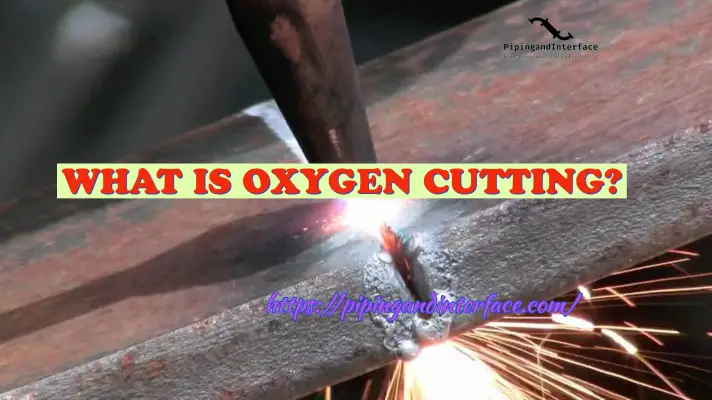A Fire and Gas detection system is a type of safety system that is designed to detect the presence of flammable or toxic gases, as well as smoke or flames, in order to prevent fires, explosions, or other hazardous events in industrial facilities or other types of buildings.
The system typically consists of a network of sensors and detectors that are strategically placed throughout the facility to monitor for the presence of dangerous gases or smoke. These sensors can be designed to detect a wide variety of gases, including methane, propane, hydrogen, and carbon monoxide, among others.
When a sensor detects the presence of gas or smoke, it sends a signal to a central control panel, which in turn can trigger an alarm, shut down equipment, or activate other safety measures to prevent a potential disaster.
Fire and Gas detection systems are essential for maintaining a safe working environment in industries such as oil and gas, petrochemical, and manufacturing, where the potential for fires and explosions is high. They are also used in public buildings and residential homes to ensure the safety of occupants.
Components of Fire and Gas Detection Systems
The components of a fire and gas detection system typically include:
Sensors and Detectors: These are the primary components of the system and are responsible for detecting the presence of flammable or toxic gases, as well as smoke or flames. There are different types of sensors and detectors that are used to detect different types of hazards.
Control Panel: The control panel is the brain of the system and is responsible for receiving and processing signals from the sensors and detectors. It also activates the appropriate alarms, warning signals, and safety measures when a hazard is detected.
Alarms and Warning Devices: These devices are used to alert personnel of a potential hazard. This can include audible alarms, flashing lights, and other visual or audio signals that are designed to grab attention.
Safety Measures: Depending on the type of hazard detected, the system may also be designed to activate safety measures, such as shutting down equipment, closing valves, or activating fire suppression systems.
Communication Devices: Communication devices may be included in the system to alert outside authorities or emergency responders in case of a hazardous event.
Power Supply: The system requires a reliable power supply to ensure that it is always operational, even during a power outage. Backup power supplies such as batteries or generators may be included to ensure the continuity of the system.
All of these components work together to detect and respond to potential hazards in order to prevent fires, explosions, and other dangerous events.
Working of a Fire and Gas Detection System
A fire and gas detection system typically works by continuously monitoring the environment for the presence of flammable or toxic gases, as well as smoke or flames. The following are the general steps of how a fire and gas detection system works:
Gas and Smoke Detection: The system uses a network of sensors and detectors to detect the presence of gas or smoke. These sensors can be designed to detect a wide range of gases such as methane, propane, hydrogen, and carbon monoxide among others.
Signal Processing: When the sensors detect the presence of gas or smoke, they send a signal to a central control panel that processes the signal and evaluates the level of the hazard.
Alarm Activation: If the level of hazard exceeds a predetermined threshold, the control panel activates an audible or visual alarm to alert personnel to the potential danger. The alarm can be a flashing light, a siren, or any other form of warning device.
Safety Measures: Depending on the severity of the hazard, the system may activate safety measures such as shutting down equipment, closing valves, or activating fire suppression systems.
Notification: The system may also be designed to notify outside authorities or emergency responders in case of a hazardous event.
Maintenance: Regular maintenance of the system is essential to ensure that it continues to function effectively. This can include periodic testing, calibration, and replacement of sensors and detectors.
Applications of Fire and Gas Detection Systems
Fire and gas detection systems are used in a variety of settings where there is a potential risk of fire or gas leaks. Some common places where these systems are used include:
Industrial plants: Fire and gas detection systems are commonly used in industrial plants, such as refineries, chemical plants, and power plants, to detect the presence of flammable gases and vapors and to alert workers to potential fire hazards.
Commercial buildings: Fire and gas detection systems are also used in commercial buildings, such as office buildings, shopping malls, and hotels, to detect and alert occupants to potential fire hazards.
Transportation systems: Fire and gas detection systems are often used in transportation systems, such as airports, train stations, and subway systems, to detect and respond to potential fire hazards or gas leaks.
Residential buildings: Fire and gas detection systems are also used in residential buildings, such as apartments and condominiums, to detect and alert occupants to potential fire hazards or gas leaks.
In general, fire and gas detection systems are used in any setting where there is a potential risk of fire or gas leaks and where early detection is critical for protecting life and property.
Types of Detectors in Fire and Gas Systems
There are several types of detectors used in fire and gas detection systems. The most common types include:
Smoke detectors: These detect smoke particles in the air and are often used in areas where there is a risk of fire, such as kitchens, living rooms, and bedrooms.
Heat detectors: These detect changes in temperature and are often used in areas where smoke detectors may not be suitable, such as kitchens or areas with high levels of dust or steam.
Gas detectors: These detect the presence of gases in the air and are used in areas where there is a risk of gas leaks, such as industrial plants, refineries, and laboratories.
Flame detectors: These detect the presence of flames and are often used in high-risk areas, such as chemical plants or oil and gas facilities.
Carbon monoxide detectors: These detect the presence of carbon monoxide gas, which is odorless and colorless but can be deadly. They are often used in residential buildings to detect potential carbon monoxide leaks from faulty appliances or heating systems.
Ultraviolet/infrared detectors: These detect invisible flames by sensing the ultraviolet and infrared radiation produced by flames. They are often used in areas where there is a high risk of fires, such as oil and gas facilities or chemical plants.
The type of detector used in a fire and gas detection system depends on the specific application and the type of hazard that needs to be detected.
Fire and Gas Detection System in Oil and Gas
A Fire and Gas Detection System (FGDS) is a critical component of safety in the oil and gas industry. It is designed to detect and alert personnel to the presence of flammable or toxic gases, as well as fires before they can cause harm to people, equipment, or the environment.
The system typically consists of sensors, control panels, alarm devices, and communication systems. The sensors are strategically placed in areas where potential hazards may arise, such as near equipment that produces heat or in areas where hazardous materials are stored or processed.
The sensors continuously monitor the environment for the presence of gas or fire, and when a hazardous condition is detected, the control panel alerts personnel through visual and audible alarms. In some cases, the system may also initiate automatic safety actions, such as shutting down equipment or activating fire suppression systems.
In the oil and gas industry, FGDS is particularly important due to the high risk of fires and gas leaks associated with the extraction, processing, and transportation of oil and gas. Implementing a reliable and effective FGDS is critical to ensuring the safety of personnel, protecting the environment, and preventing costly equipment damage or downtime.
Design of Fire and Gas Detection System for Oil and Gas
NFPA 715 provides the guidelines for Fire and Gas Detection Systems. The design of a Fire and Gas Detection System (FGDS) for the oil and gas industry involves several important considerations to ensure its effectiveness in detecting and mitigating hazards. Here are some key design considerations:
Hazard identification: The first step in designing an FGDS is to identify the potential hazards in the facility. This includes identifying potential sources of fires and gas leaks and determining the types of gases that may be present.
Sensor selection and placement: The type and placement of sensors are critical factors in detecting hazards. Sensors should be placed in areas where gas leaks or fires are most likely to occur, such as near equipment that produces heat or in areas where hazardous materials are stored or processed. The selection of the appropriate sensor technology is also important to ensure accurate detection and minimal false alarms.
System redundancy: Redundancy is essential to ensure that the system continues to function even if one or more sensors or components fail. This can be achieved by installing multiple sensors in critical areas, using backup power supplies, and providing redundant communication paths.
Integration with other safety systems: The FGDS should be integrated with other safety systems, such as emergency shutdown systems and fire suppression systems, to provide a comprehensive safety solution.
Maintenance and testing: Regular maintenance and testing are essential to ensure the FGDS is operating effectively. This includes regular calibration of sensors, testing of alarm systems, and conducting regular drills to ensure personnel is familiar with the system and its operation.
Overall, the design of an FGDS for the oil and gas industry requires careful consideration of all the potential hazards and the appropriate technology and redundancy measures to ensure the effective detection and mitigation of hazards.
Fire and Gas Detection System Design Standards
Several design standards exist for Fire and Gas Detection Systems (FGDS) in the oil and gas industry. These standards provide guidance on the design, installation, and maintenance of FGDS to ensure that they are effective and reliable in detecting and mitigating hazards. Here are some of the most commonly used standards:
- NFPA 72: National Fire Alarm and Signaling Code – This standard provides guidelines for the design, installation, testing, and maintenance of fire alarm systems, including FGDS.
- API RP 14C: Recommended Practice for Analysis, Design, Installation, and Testing of Basic Surface Safety Systems for Offshore Production Platforms – This standard provides guidance for the design, installation, and testing of safety systems, including FGDS, on offshore production platforms.
- IEC 61511: Functional Safety – Safety Instrumented Systems for the Process Industry Sector – This international standard provides guidelines for the design, implementation, and maintenance of safety instrumented systems, including FGDS, in the process industry sector.
- ISA TR84.00.07: Guidance on the Evaluation of Fire, Combustible Gas, and Toxic Vapor Detection Systems – This technical report provides guidance on the evaluation of FGDS to ensure that they meet the performance requirements for detecting and mitigating hazards.
- EN 54-27: Fire detection and fire alarm systems – Part 27: Point-type fire detectors using a smoke sensor, combined with a carbon monoxide (CO) sensor or a heat sensor – This European standard specifies requirements, test methods, and performance criteria for point-type fire detectors that incorporate both smoke and carbon monoxide (CO) sensors.
Overall, compliance with these standards can help ensure that FGDS are designed, installed, and maintained to the highest standards of safety and reliability,






